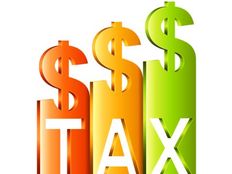
The municipal bond market has been a long-time target of Washington policymakers. A broad tax overhaul may be unlikely to occur this year, but politicians support curbing the tax exemption. The goal is to close a loophole that costs the federal government an estimated $30 billion per year in lost tax payments. President Obama’s proposal would place a 28% cap on the tax exemption for wealthy households that tend to benefit from muni bonds the most.
State treasurers, mayors, and other officials argue that removing the tax break could cost municipalities millions each year. In a letter to Congress, 600 state and local officials urged the government to avoid taxing the interest paid to muni bond investors. They argued that the muni bond market is vital for financing schools, roads, transit systems, and other infrastructure and taxing the bonds could raise the cost of debt for cities and states.
Below, MunicipalBonds.com takes a quick look at the history of muni bonds for some context and how the tax changes could impact the market – even if they don’t come until 2017.
History of Muni Bonds
Municipal bonds were originally designed to help the middle class before tax-deferred retirement accounts became popular. Investors purchased muni bonds as a tax-free way to save for education or retirement, but these bonds were replaced by 401(k)s and Roth IRAs that offer the same advantages with higher-yielding securities. Since then, the bonds have become much less popular among middle class investors.
Wealthy investors quickly picked up the slack from the middle class. Relatively low contribution limits to tax-deferred retirement accounts meant that wealthier investors could still benefit from tax-advantaged muni bonds. They could max out their tax-deferred retirement accounts and then put any remaining funds into muni bonds to minimize their tax exposure. These bonds have become especially appealing in today’s low interest rate environment.
Municipal Mechanics
Municipal bonds are widely owned by wealthy investors these days. In fact, the top 1% of households own more than 40% of all muni bonds, according to MIT researchers, which is up from just a quarter of muni bonds back in 1989. Low interest rates following the 2008 global economic crisis has made these bonds even more compelling for wealthy households seeking safe-haven investments that minimize taxes and pay attractive yields.
since they own a growing majority of the bonds. But, there’s evidence that the tax-advantaged nature of muni bonds could also benefit low-income taxpayers. The Urban-Brookings Tax Policy Center found that low-income taxpayers could realize indirect benefits as high as 15% of their total income through lower costs to governments in providing public services.
Policies on the Table
President Obama proposed the most popular plan to curb the tax exemptions for the municipal bond market back in 2011. Under the proposal, there would be new limits on the value of tax deductions and tax breaks for singles making more than $200,000 per year and couples making more than $250,000 per year. This could significantly reduce demand for muni bonds given that more than 40% of the issues are owned by wealthy individuals.
A wealthy individual paying the top tax rate of 35% may save $35,000 in taxes for each $100,000 in itemized deductions. Obama’s proposed limits to these deductions could cap those levels at 28%, which would increase their tax bill by $7,000. These tax increases would extend to muni bonds if the interest income is no longer tax-free, which would make the security significantly less attractive on an after-tax basis.
The Bottom Line
The municipal bond market has been a long-time target for Washington policymakers. While the move could increase federal tax revenue by around $30 billion per year, municipal officials worry that the changes could significantly increase their cost of debt. This could impact not only high-net-worth individuals, but also low-income individuals that benefit from public services.






